Next stop: La Luna
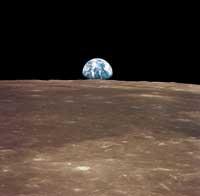
The goal is not easy, but they want to advance step by step. Several projects have already been launched and, given the high cost of these investigations, the responsibility to study the Moon does not depend on a single State, but together with the United States public and private entities from Europe and Japan, among others.
In the 1960s, the motive for which he was heading to the Moon was to win the competition between the two most powerful nations in the world, so that the superiority of the winner would manifest before all. But, once they managed to tread the Moon, they lost the support of society to continue with the new projects. Neither the government nor the people were willing to pay their trips to the Moon for purely scientific reasons.
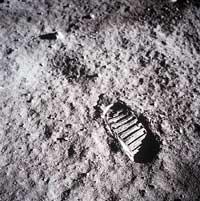
Now, when increasingly distant data is known, the idea of knowing such a nearby satellite has become something stimulating. For example, for astronomers having an observatory on the occult side of the Moon is really interesting. From there, without the electromagnetic pollution emitted by the Earth, the Universe can be observed in all frequencies, so some believe that this observatory would give a flood of data as in its day the Hubble Telescope.
But the idea that arouses the most interest is to establish a sustainable base. Thanks to data collected by NASA's Clementine and Lunar Prospector probes, the U.S. Space Technology Research Laboratory has chosen a suitable location. According to those responsible for the laboratory, the best option can be the Shackleton crater, located in the South Pole of the Moon, on the one hand because the Lunar Prospector probe showed the presence of hydrogen and, therefore, it is believed that there can be water (frozen); on the other, because in an area contiguous to the crater of 30 km of length there are three points that periodically illuminates the Sun long. Thus, the installation of solar panels in this area would allow to obtain solar energy continuously.

However, the deepening of the knowledge of the Universe, the Earth and the human being, that is, the mere science, and the desire to fulfill the desires of the dreamers, do not attract enough money to carry out the project of going to the Moon. However, if it reported economic benefits, it would be more likely to push them forward.
What does the Moon offer?
The truth is that it is not very clear because it is not well known. However, although the first image of the Moon taken on Earth showed a sterile and decayed zone, the rejoicing can harbor many riches. The regolith is the name given to the surface of the Moon covered with dust and concrete has already been obtained in the Engineering Department of Construction of the Polytechnic School of Catalonia, mixing moon dust, sulfur and cement.
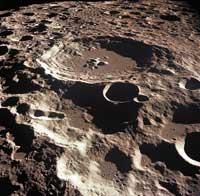
However, it is not a matter of going to look for goods to bring the Earth to the Moon, but of looking for ways to meet the needs that may arise there. The rockets necessary to go to the Moon are too expensive, and until the advances of technology fail to cover travel in a spectacular way, the only way to maintain a sustainable base on the Moon is to have the ability to use their own resources. Likewise, the smallest possible number of supplies should be carried from Earth.
A solution to reduce costs is to extract oxygen from the Regolith and lunar rocks. In this way one of the components of the fuel of the rockets would be obtained, since in the current chemical rockets hydrogen and liquid oxygen is burned and the weight of the mixture of both propellants corresponds to the oxygen in 85%. Now, a rocket that goes to the Moon has to carry enough oxygen to move, so they are so large and heavy. On the contrary, if oxygen is used from the Moon, the rockets would be 3 times smaller and therefore much cheaper.
Apart from this, astronauts in space breathe the oxygen packaged on Earth, so from this point of view it is also of great interest to obtain oxygen from the gloss. Is it possible? The researchers say yes. About 45% of the gloss is oxygen, but is not in a gaseous state. Therefore, the extraction of this oxygen is done by different methods, such as pyrolysis, magmatic electrolysis, and hydrogen reduction. These chemical methods are well known; the only difficulties are adapting to the lunar environment and the large size of the action.
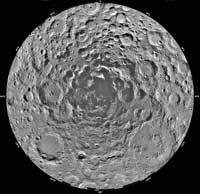
Therefore, although they managed to extract oxygen from the samples provided in the Apollo missions, to ensure that it is possible to advance, NASA intends to establish a small robotic mechanism to produce oxygen on the surface of the Moon. Russian and American technicians have achieved success in a test held on Earth in collaboration.
On the other hand, hydrogen comes from the solar wind and is trapped in the glow. Although it is in quantities lower than oxygen, it can be obtained by similar methods. This hydrogen would be used as fuel, as a reducing agent for oxygen extraction or as a water synthesizer along with oxygen. Water is as necessary as oxygen and hydrogen.
Is there water on the Moon?
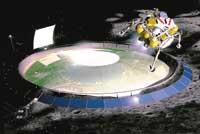
However, the samples provided in Apollo missions showed that the interior of the Moon is arid. On the contrary, objects containing water almost continuously collide against the surface of the Moon, such as comets. Consequently, in shaded areas, such as the poles of the Moon, water may accumulate, since the local temperature is -233º C. NASA's 1994 Clementine and 1998-99 Lunar Prospector missions were among their objectives to demonstrate clear traces of water on the Moon. According to data compiled by the Lunar Prospector probe on the amount of hydrogen, at both poles there can be 6 billion tons of ice, being more abundant in the North Pole. In addition, part of this ice, mixed with minerals, is 40 cm under the rocks, while another part is almost pure.
If these data are checked, the idea of establishing a colony on the Moon will gain enormous momentum, as water would cover the needs of a sustainable home. Obtaining water from the ice is simple and by means of solar energy and electrolysis can be extracted fuel for rockets (hydrogen and oxygen) and oxygen to breathe.

The production of fuel for rockets on the Moon is of great importance, since to remove it from the orbit of the Earth a lot of fuel is needed, and therefore, above all, space travel is so expensive. On the contrary, starting from the Moon, the interior of the Solar System is at hand and the missions would be very much covered.
Production of energy
Researchers and engineers believe that the Moon is an ideal place to produce energy. For example, solar panels located both on the surface and in their orbit would have no obstacle to receiving the sun's rays, since there is no day-night cloud or cycle. Later, this energy, converted into microwave or by laser beams, would be sent to Earth.
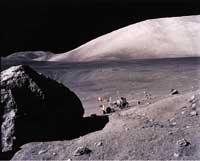
The isotope Helio-3 is very abundant on the Moon. The sum of deuterium and helium-3 atoms in the fusion nuclear power plants that are intended to be built in the future, in addition to obtaining more energy than current fission reactors, significantly reduces radioactive pollution. Fusion reactors can use other elements, but this is the only option that prevents lethal radiations. And although deuterium is abundant in the sea, helium-3 is only available on the Moon. Although it would have to leave the Regolith, it is an option to take into account because the Earth is accumulating more and more nuclear waste. In addition, to remove the risk of waste generated by nuclear power plants, the use of the Moon as a nuclear landfill is proposed.
Another condition for projects to advance is that all buildings and structures can be built with materials on the Moon. The gleaming blocks can become units of the buildings and with the elements that mix them will have to investigate the ways of elaborating the necessary materials, such as plastics, fibers, ceramics, glass, etc.
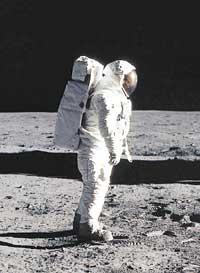
However, the main obstacle is to get a huge amount of money for research to be done to try to fulfill your dream. For this reason, the projects already underway, in addition to having the support of several States, have the support of the companies. Therefore, since the commercial vision is increasingly stronger, the organization of travel agencies that offer trips or stays to the Moon is valued positively. Yes, they say the final goal will be to get money to drive the progress of science. There are already several companies that have explained their intention to organize trips as the mission ‘Artemis project’. A private American association announces that with this mission, before the fifteen years, a trip to the Moon of 2 to 3 weeks can be carried out for a luxury trip to know the European capitals. It is nothing expensive. Is it possible?
International forces around the same intention
In 1994 an international meeting was held in the city of Beatenberg organized by the European Space Agency (ESA) and Switzerland. The objective of the meeting was to promote and coordinate projects of study of the Moon, both through people and robots. According to the organizers of the meeting, the exploration and exploitation of the Moon offers many possibilities. For example, technological advances to create can have a scientific and industrial use on Earth. In this way, the first phases of the international strategy were established and it was decided to meet every two years to analyze the situation of these plans.
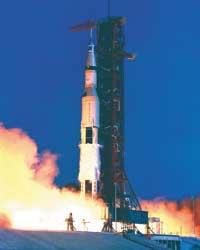
On the other hand, in 1979 an international declaration was proposed with the aim of regulating activities on the Moon and other stars, avoiding being a source of international problems and ensuring fair use to all countries. But politically it failed because only nine states accepted it. Among them were neither the United States nor Russia, because in the writing it is indicated that the Moon and celestial stars are the patrimony of humanity and, in his opinion, the meaning of this idea is not clear. However, UNESCO denounces that some countries, and especially the United States, are against defining them more precisely.
However, the Moon's curricula advance. Among them is the ESA Leda project, which will be launched in 2002 with the collaboration of French and Italian space agencies. The Japanese, for their part, want to make two shots, the Loom in 2002 and the Lunar -A in 2003. The objective of these two projects is to collect data to know the environment, topography, mineralogy, seismic waves and the structure of the Moon. On the other hand, within the European mission Smart -1 that they hope to have prepared for 2002, the spacecraft will orbit for six months the Moon and test new technologies.





